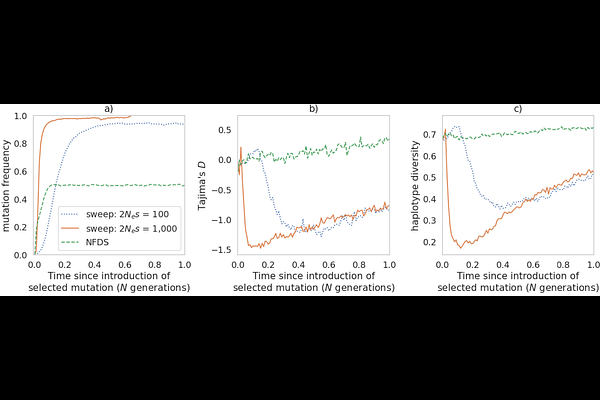Can ancient DNA and other forms of time-sampled data aid in the inference of negative frequency dependent selection?

Can ancient DNA and other forms of time-sampled data aid in the inference of negative frequency dependent selection?
Soni, V.
AbstractNegative frequency-dependent selection (NFDS) is commonly viewed as the most efficacious form of balancing selection. Despite this, inferring NFDS remains challenging, and questions remain as to its relative importance in maintaining genetic variation in populations. Recent advances in both sequencing and genotyping technologies has resulted in a considerable increase in the number of publicly available human ancient DNA datasets, creating new opportunities for development of methods for the inference of NFDS from time-sampled data. In this perspective, I present three brief simulation studies to show how time-sampled data can aid improve inference power. First, I show how multiple time points can help us distinguish between recent NFDS and partial selective sweeps based on allele frequency trajectories. I then demonstrate how selective effects can be distinguished from population history based on changes in genetic variation and the site frequency spectrum over time. Finally, I apply an approximate Bayesian computation approach to compare the power of multiple and single time point datasets in estimating the time for which NFDS has been shaping variation for. Thus, I show how data from multiple timepoints can facilitate the generation of new methodological approaches for better inference of NFDS.